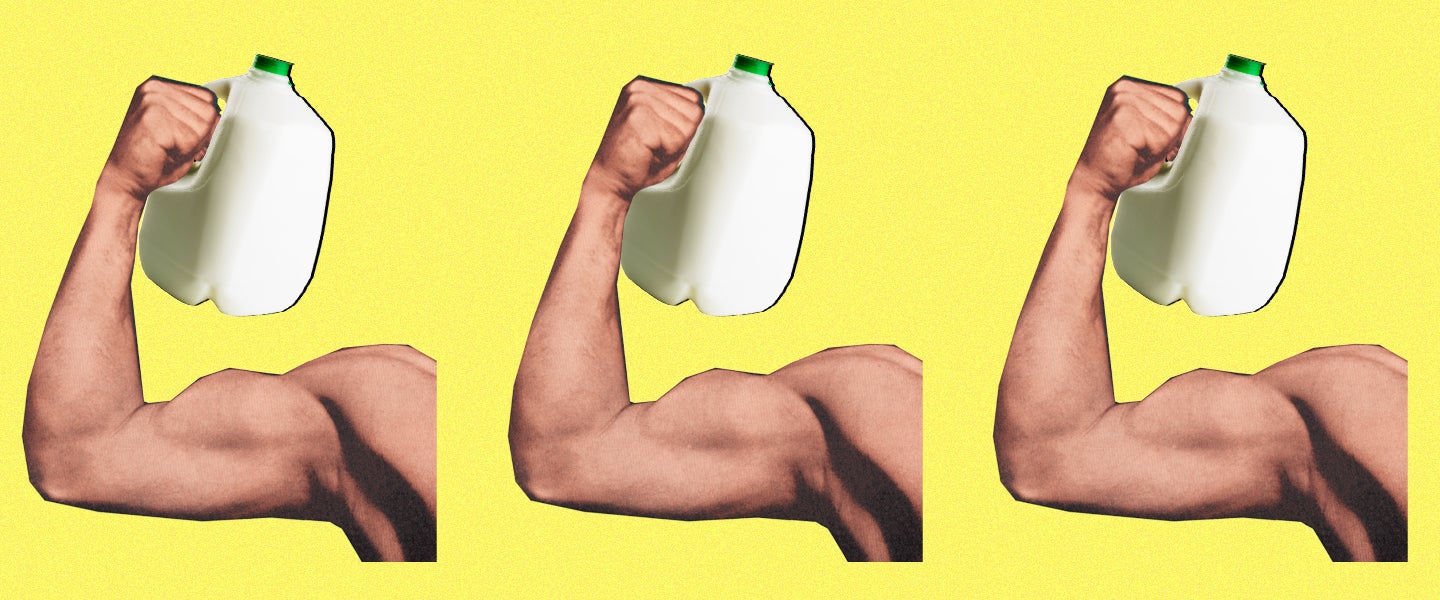People come up with all sorts of excuses as to why they can’t work out. Prior to this whole stay-at-home thing, those excuses ran the gamut from “I’m too tired” to “My dog ate my running shoes.” But now that we’re all in isolation and gyms are closed, those excuses have boiled down to basically one thing: “How the heck am I supposed to do everything I do at the gym, but at home?”
Unsurprisingly, that’s exactly what it is: An excuse. Because there’s actually plenty you can do at home that already mimics what you used to do at the gym — if you know where to look and how to utilize what you have. “You might not be able to recreate everything you used at a gym at home, but there’s a lot there,” says Damien Brown, a personal trainer in L.A. “For example, you can use a gallon of milk or one of those big things of laundry detergent as a kettlebell.”
Which is to say, the first rule of working out at home when you haven’t scraped together a home gym is looking at everyday items around the house and imagining what they could be used for in the pursuit of getting swole.
But what are those things?
Let’s find out…
Milk Jugs (Or Anything Heavy, Really)
Brown is right — gallons of milk, which weigh close to nine pounds, do make great kettlebells thanks to their handy, er, handles. But if you’re not into wasting milk just to get your pump on, he’s also right that there are plenty of replacements at home, too, that can sub in as weights, e.g., cans of soup if you want a lighter weight for shoulder raises; the aforementioned liquid laundry detergent if you want something slightly heavier for curls; and a backpack or duffle bag full of books if you want a lot of weight for something like squats or lunges.
Hand Towels
If you’ve got a hand towel or a dish rag, you’ve got a workout. “If you’re feeling tight, a hand towel can help you get into a deep stretch,” Brown explains. “Hook it around a leg when stretching your hamstrings, or use a towel between both hands to stretch your shoulder rotator. Towels are also good for rows: Hook it around a door handle (the lever variety), place your feet at the bottom of the door and pull yourself up toward the handle.”
Chairs
Chairs are like the Swiss Army knife of home workout tools, because there’s so much you can use them for. In fact, let’s count the ways:
- You can use them for dips.
- You can put your feet on them and use them for incline and decline push-ups.
- You can push two chairs almost together, put a broomstick (hey, another at-home tool!) across each seat and hang between them to do inverted rows.
- You can recruit them for the ol’ Bugarian split squat.
Chairs are so versatile, they might even give the uber-versatile stairs a run (pun unavoidable) for their home-workout money.
Paper Plates
What could you possibly do with paper plates? Try the ab workout to end all ab workouts, that’s what. “Find a nice open space on a hardwood floor, get down on your knees and place your hands on two paper plates each,” Brown instructs. “Then slide your hands out in one even motion, keeping your core engaged, like you were using an ab roller. Do 10 of those and tell me you don’t feel the burn.”
But paper plates aren’t just good for abs — you can also use them for slide lunges if you’re working out in a small apartment. Just place your back foot on a paper plate and slide it backward until you’re in a lunge. Slide it back, and then repeat (again and again and again — you get the idea).
Frankly, Just a Wall
MEL contributor, bodybuilder and home-gym enthusiast Oliver Lee Bateman says one of the most overlooked home workout tools is just a wall. “I use it all the time for handstand holds and push-ups,” he explains.

Overall, walls are another great example of a highly versatile body-weight aid, a la chairs or stairs, and wall sits, walks and squats are just a few of the exercises besides the classic handstand you could add to your repertoire.
So the next time you’re feeling sorry for yourself because you can’t bench press mad weight at the gym, remind yourself that you’ve got a half gallon of milk, clean towels and a perfectly good chair at home — none of which costs $250 a month or is impossible to cancel at a moment’s notice.

